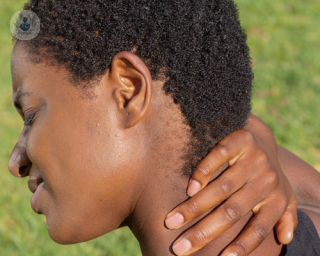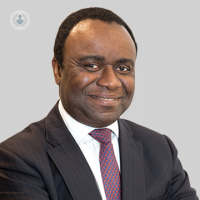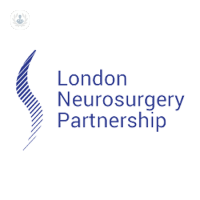Trapped nerve
Dr Michelle McHenry - Rheumatology
Created on: 11-13-2012
Updated on: 04-26-2023
Edited by: Conor Lynch
What is radiculopathy (trapped nerve)?
Radiculopathy, or in simpler terms, a trapped nerve, is a condition in which one or more nerves in the vertebrae are compressed or 'pinched'. This trapped nerve being compressed leads to impaired movement.
Radiculopathy can occur in any level of the spinal column, and there are many different types. The main types of radiculopathy are as follows:
- Lumbar radiculopathy: This is the most common radiculopathy, due to the fact that the lumbar region is subjected to the most rotation and strain in everyday life. Lumbar radiculopathy is categorised by the displacement of an intervertebral disc towards the outside of the spinal column. This displacement compresses or 'pinches' the nerves running along the spinal cord. Sciatica is caused by a compressed nerve.
- Cervical radiculopathy: Cervical pain is sometimes caused by a lesion near the root of the spinal nerve, or a nerve of the spinal cord.
- Dorsal radiculopathy: Dorsal radiculopathy is not usually as common or as painful as cervical or lumbar radiculopathy. It occurs more frequently in the upper dorsal region.

What are the symptoms of radiculopathy?
Symptoms of a trapped nerve are well-defined and vary according to how compression occurs. The patient will first notice pain, which, if left untreated, will gradually increase over time, possibly limiting the function of muscles and limbs.
The most common symptoms of a trapped nerve include the following:
- tingling sensation in the legs
- muscle spasms
- numbing or weakness of the affected areas
A clear manifestation of lumbar radiculopathy is joint cracking. If the lesion occurs in the dorsal region, the patient feels a sharp back pain when breathing in.
What are the causes of radiculopathy?
Radiculopathy occurs when a nerve root in the spinal column is compressed. There are several possible causes. The main ones include the following:
- overexertion: lifting a load and hearing a 'crack' almost immediately. This is one of the most common causes
- maintaining poor posture for long periods of time while working
- osteoarthritis
- traumatic injury
Can trapped nerves be prevented?
Yes. Radiculopathy can most certainly be prevented. One of the best ways to prevent radiculopathy is to maintain a good posture. You should significantly reduce the loads you lift, and always bear in mind that the back is the axis of your body, hence, you should make harmonious movements and avoid a sedentary lifestyle.
How are trapped nerves treated non-surgically?
It is highly probable that the optimal treatment for you will consist of a combination of painkillers and physiotherapy sessions. In lumbar radiculopathy, magnetic field therapy using lumbar corsets may be effective. In cervical radiculopathy, a neck brace may be used to alleviate the pressure on the vertebrae.
Which specialist treats radiculopathy?
Neurosurgeons are the medical professionals that typically treat trapped nerves.
What body parts do trapped nerves typically affect?
Most commonly, individuals suffer from trapped nerves in their shoulders, legs, back, and neck.

Can trapped nerves go away on their own?
Yes, trapped nerves do typically resolve on their own. In the majority of cases, pain-related issues that are directly caused by trapped nerves will eventually go away on their own. A herniated disc that causes one to suffer from trapped nerve pain, for example, will, in many cases, repair itself, without the need for treatment.
How can radiculopathy be treated surgically?
There are, in fact, a whole host of different surgical options when it comes to treating a trapped nerve surgically. Firstly, minimally invasive surgery can be performed, whereby a small incision is made, which is then followed by a tubular retractor being inserted. This is done in order to create a small tunnel to access the spine by holding the muscles out of the way. The neurosurgeon will then insert small instruments into the retractor.
Another surgical option to effectively treat radiculopathy is conventional surgery, where a single larger incision is made and used to access the patient's spinal column. The surgeon will hereafter retract the surrounding muscles and tissue to reveal and get a closer look at the treatment area in order to safely perform the procedure.
There are a number of different specific procedures that can help treat a trapped nerve, and the patient can choose whether minimally invasive or conventional surgery is performed. These include:
- Laminotomy. This is the partial removal of the lamina.
- Foraminotomy. The widening of the foramen (the opening in between the vertebrae and the nerve root)
- Laminectomy. This procedure involves the complete removal of the lamina
- Discectomy. Removal of part of the bulging disc causing nerve compression
How is a trapped nerve diagnosed?
The patient's symptoms will be comprehensively evaluated before an MRI scan and/or a CT scan are carried out to thoroughly and accurately examine the individual's spinal cord, tissues, and nerve roots.












